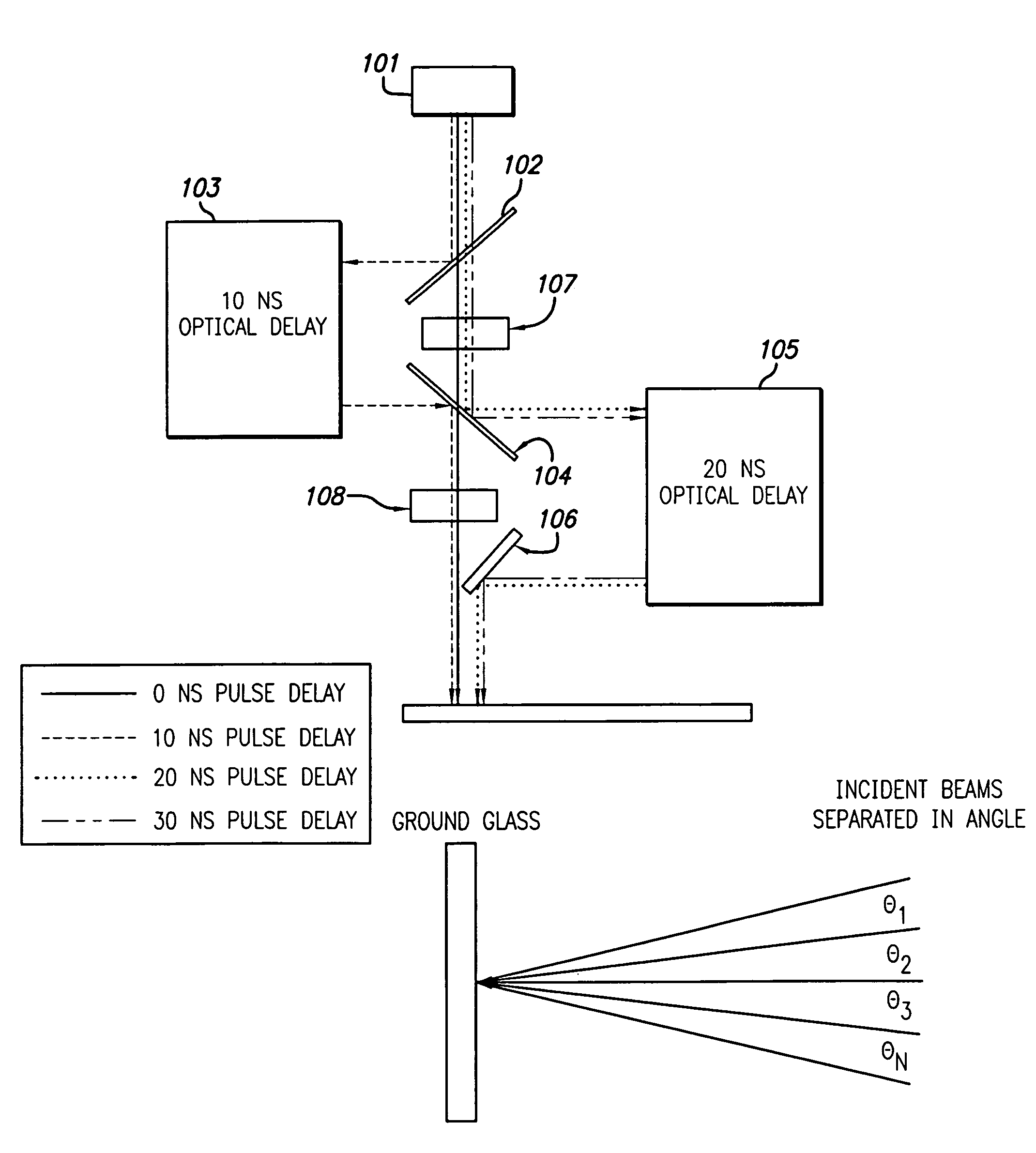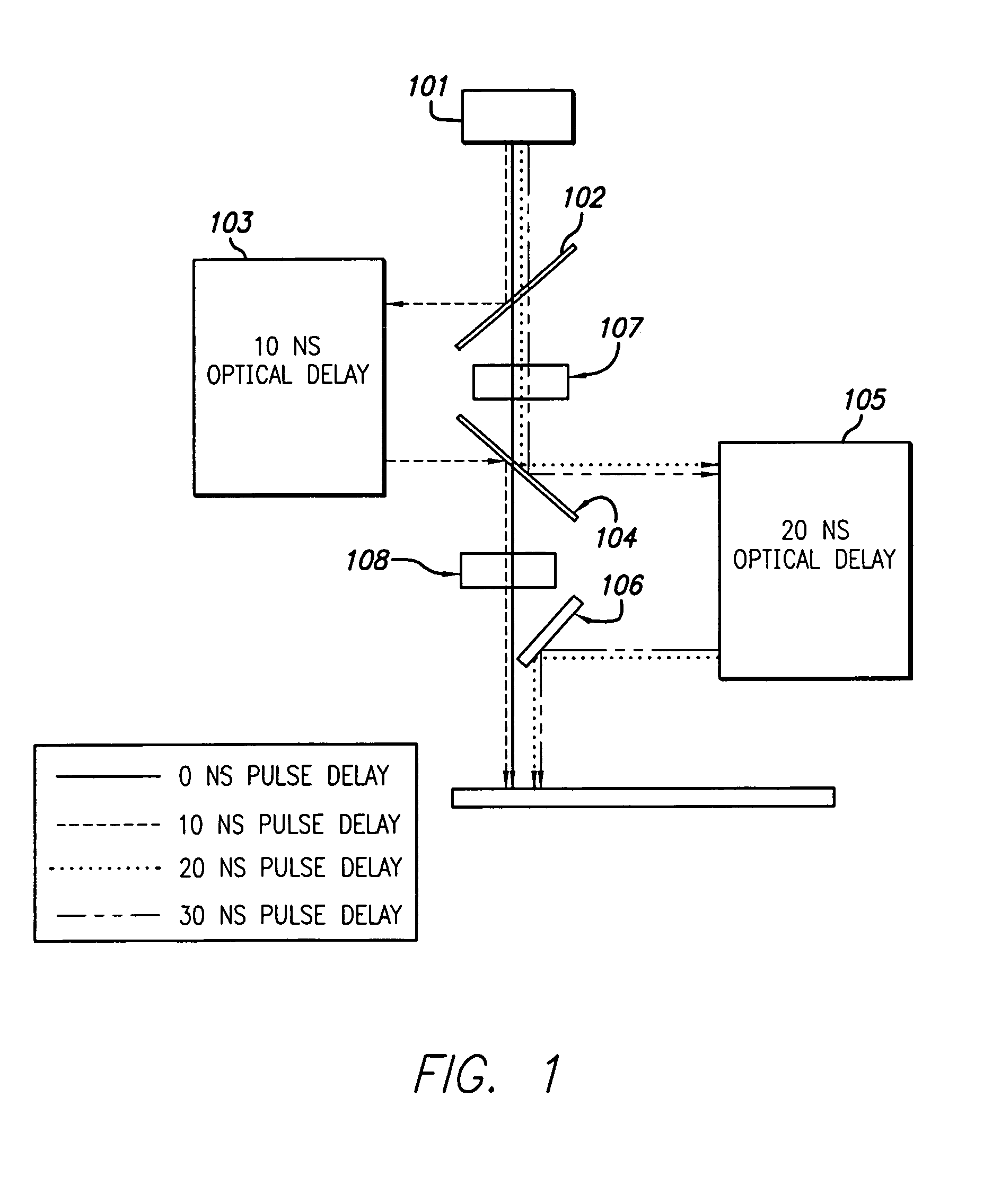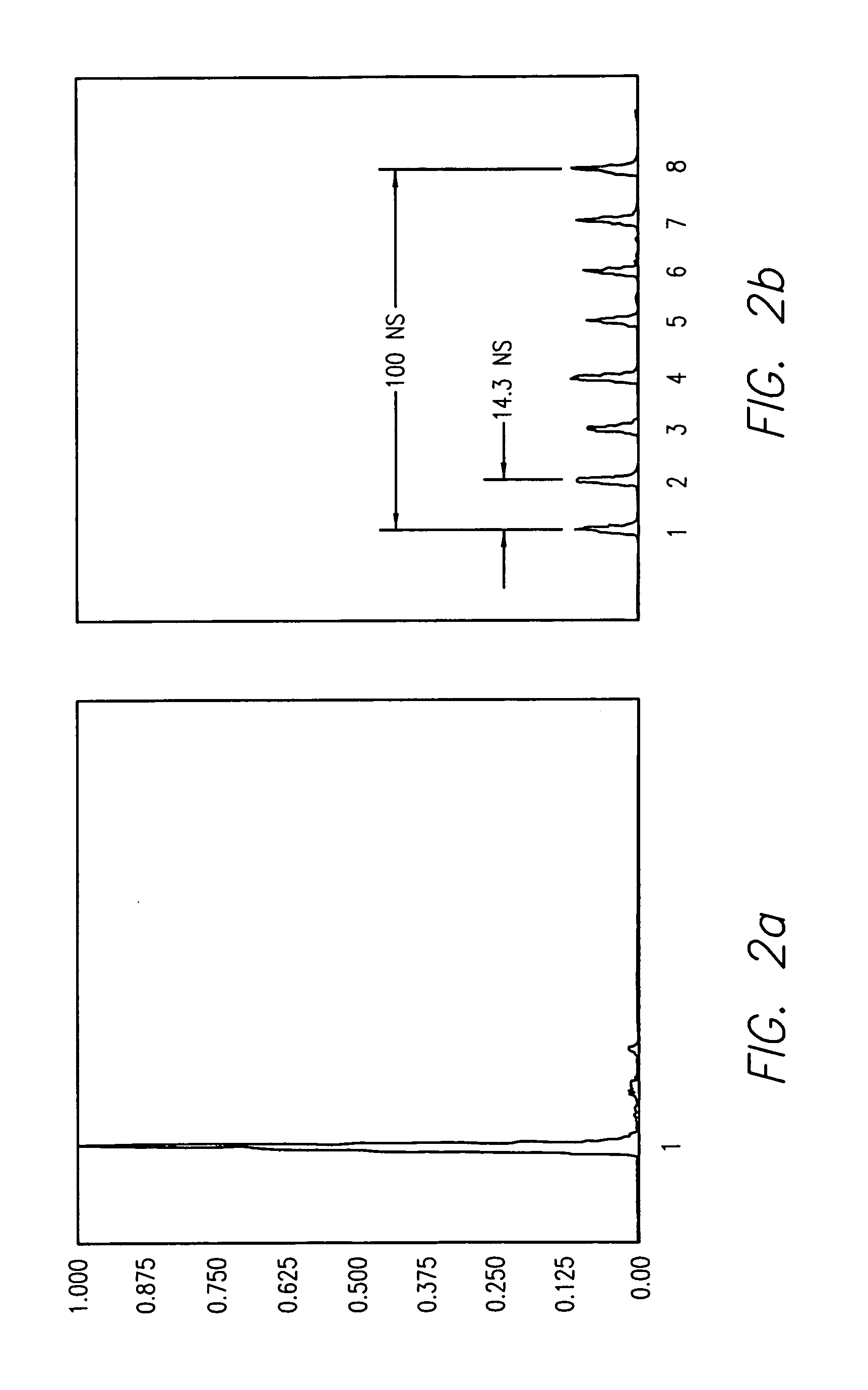Peak power and speckle contrast reduction for a single layer pulse
a single-layer pulse and speckle contrast technology, applied in the field of optical imaging, can solve the problems of affecting the quality of optical systems, so as to and reduce the speckle contrast
- Summary
- Abstract
- Description
- Claims
- Application Information
AI Technical Summary
Benefits of technology
Problems solved by technology
Method used
Image
Examples
Embodiment Construction
[0034]The present invention is a system and method for reducing peak power and speckle contrast in an imaging system employing a pulsed illumination source. The system uses multiple beam splitters in an arrangement that has the ability in many environments to minimize the energy variation between pulses. This system allows for a flexible setup where various combinations of plate beamsplitters and cube beamsplitters in different arrangements and geometries may be used while still within the scope of the teachings of the current invention.
[0035]In typical pulsed illumination source inspection systems, optical delay lines can be a major source of losses. The losses in the delay arms result from imperfect optics such as mirrors having less than 100% reflectivity, beamsplitters with loss and unequal beamsplit ratios, absorption of light energy in glass materials and coatings, and light energy scattering effects. These optical delay line losses adversely contribute to variations in the pu...
PUM
 Login to View More
Login to View More Abstract
Description
Claims
Application Information
 Login to View More
Login to View More - R&D
- Intellectual Property
- Life Sciences
- Materials
- Tech Scout
- Unparalleled Data Quality
- Higher Quality Content
- 60% Fewer Hallucinations
Browse by: Latest US Patents, China's latest patents, Technical Efficacy Thesaurus, Application Domain, Technology Topic, Popular Technical Reports.
© 2025 PatSnap. All rights reserved.Legal|Privacy policy|Modern Slavery Act Transparency Statement|Sitemap|About US| Contact US: help@patsnap.com



